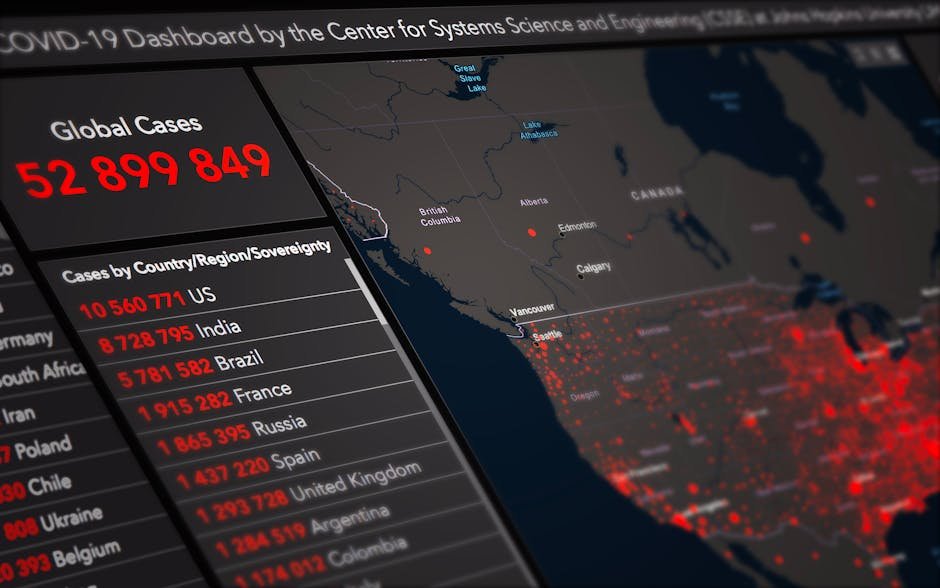Hey there, adventurous parents! Dreaming of trading cubicles for beachside workspaces while giving your kids a world-class education through travel? Becoming a family digital nomad—working remotely while traveling with kids—is totally doable in 2025, with over 35 million nomads worldwide and 60+ countries offering digital nomad visas. Whether you’re eyeing Thailand’s vibrant markets or Portugal’s historic towns, this lifestyle blends work, family, and exploration. But it takes planning to balance remote work, schooling, and travel logistics. This guide shares practical tips for family digital nomads, covering visas, education, work-life balance, and more, based on 2025 trends and nomad community insights. Let’s make your family’s global adventure a success!
Why Go Nomad as a Family?
Family digital nomadism lets parents work remotely while exposing kids to diverse cultures, languages, and experiences. In 2025, remote work is mainstream (40% of companies offer hybrid/remote roles), and visas like Spain’s Digital Nomad Visa or Mexico’s Temporary Resident Visa welcome families. Benefits include:
- Cultural Exposure: Kids learn from real-world experiences, like exploring Mayan ruins or Thai temples.
- Flexibility: Parents set work hours; families choose destinations that fit budgets and interests.
- Affordability: Live in low-cost hubs like Chiang Mai ($1,000–$2,000 USD/month for a family) while earning Western salaries.
- Education: Worldschooling or online programs offer tailored learning.
But challenges like schooling, healthcare, and work-life balance require strategy. Here’s how to thrive.
Top Tips for Family Digital Nomads
These 10 tips, grounded in nomad feedback and 2025 realities, will help you travel with kids and work remotely with ease.
1. Choose Family-Friendly Destinations
Pick locations with affordable living, good infrastructure, and kid-friendly amenities. Chiang Mai, Thailand, offers low costs ($1,000–$2,000 USD/month for a family), international schools, and nomad communities. Lisbon, Portugal, has mild weather and English-speaking schools ($1,500–$2,500 USD/month).
- Action: Research family-friendly hubs on Nomad List or X groups like “Family Nomads.” Prioritize fast Wi-Fi (50+ Mbps), hospitals, and safe neighborhoods.
- Example: A family chooses Playa del Carmen, Mexico, for its $1,200–$2,000 USD/month budget, beaches, and international schools.
- Why It Works: Family-oriented destinations simplify logistics and ensure comfort.
2. Navigate Digital Nomad Visas for Families
Many nomad visas include dependents, allowing kids and spouses to join. Costa Rica’s Digital Nomad Visa requires $4,000 USD/month for families, while Malaysia’s MTEP is tech-focused and family-inclusive.
- Action: Check visa rules via official portals (e.g., Costa Rica Tourism Board). Prepare proof of income ($2,000–$5,000 USD/month), health insurance, and school plans. Use agents like Emerhub for complex applications ($500–$2,000 USD).
- Example: A family secures Portugal’s D8 Visa ($3,511 USD/month income), allowing a 4-year stay with access to public schools.
- Why It Works: Family visas ensure legal stays and access to local services.
3. Plan Education with Worldschooling or Online Programs
Kids need education, and nomads have flexible options: worldschooling (learning through travel) or online schools. Worldschooling blends cultural experiences (e.g., museum visits) with academics, while platforms like Outschool or Khan Academy offer structured curricula.
- Action: Create a worldschooling plan (e.g., history via Mayan ruins in Mexico) or enroll in online schools ($100–$500 USD/month). Check local homeschooling laws (e.g., Thailand allows it; Portugal requires registration).
- Example: A family in Bali uses Outschool ($200 USD/month) for core subjects and local markets for cultural lessons.
- Why It Works: Tailored education keeps kids learning while embracing travel.
4. Secure Stable Remote Income
Consistent earnings are crucial with family expenses. Freelancers need multiple clients; employees require remote-friendly jobs.
- Action: Line up gigs on Upwork or LinkedIn, targeting $3,000–$6,000 USD/month to cover family costs and visa thresholds (e.g., Spain’s $2,853 USD/month). Diversify income (e.g., consulting + teaching).
- Example: A parent in Thailand lands a $4,000 USD/month remote tech job, covering the LTR visa and family expenses.
- Why It Works: Stable income ensures financial security for travel and kids’ needs.
5. Invest in Reliable Tech and Wi-Fi
Remote work demands fast internet and dependable gear. Hubs like Lisbon (100 Mbps) are reliable, but rural spots like Koh Phangan (20–50 Mbps) can falter.
- Action: Choose co-working spaces (e.g., Dojo Bali, $150–$300 USD/month) or rentals with verified Wi-Fi. Carry a backup hotspot (e.g., AIS Thailand, $20 USD/month) and a quality laptop (e.g., MacBook Air, ~$1,200 USD).
- Example: A family in Chiang Mai uses Punspace’s 80 Mbps Wi-Fi for Zoom calls, avoiding home outages.
- Why It Works: Reliable tech prevents work disruptions, keeping income steady.
6. Balance Work and Family Time
Juggling remote work and parenting is tough, especially with time zone differences (e.g., US clients from Asia).
- Action: Set a schedule (e.g., work 8 AM–1 PM, family time after). Use tools like Calendly to manage meetings and Trello for tasks. Share parenting duties with a partner or hire local help ($100–$300 USD/month in Thailand).
- Example: A parent in Lisbon works mornings, then explores Belém with kids in the afternoon.
- Why It Works: Clear boundaries prevent burnout and ensure quality family time.
7. Prioritize Healthcare and Safety
Kids need reliable healthcare, and safety is non-negotiable. Countries like Spain and Costa Rica have quality hospitals; rural areas may not.
- Action: Get global health insurance (e.g., SafetyWing, $50–$150 USD/month per person). Research hospitals (e.g., Bangkok Hospital in Chiang Mai) and safe neighborhoods via X groups like “Nomads with Kids.”
- Example: A family in Mexico buys Cigna insurance ($400 USD/month for four), accessing top clinics in Playa del Carmen.
- Why It Works: Insurance and safe locations provide peace of mind.
8. Embrace Co-Living and Community
Co-living spaces like Selina (Mexico, Portugal) or Sun and Co. (Spain) offer family-friendly setups with private rooms, kitchens, and nomad communities.
- Action: Book co-living spaces ($800–$2,000 USD/month for families) or Airbnb apartments. Join family nomad groups on X or Facebook (e.g., “Worldschooling Families”) for playdates and tips.
- Example: A family in Bali stays at Dojo Bali’s villas ($1,000 USD/month), connecting with other nomad parents.
- Why It Works: Communities reduce isolation and provide support for kids and parents.
9. Budget Smartly for Family Costs
Family nomad life costs more than solo travel ($1,000–$3,000 USD/month). Low-cost hubs like Thailand or Colombia stretch budgets further.
- Action: Track expenses with apps like YNAB ($15 USD/month). Budget for rent ($500–$1,500 USD), food ($200–$400 USD), schooling ($100–$500 USD), and travel ($200–$600 USD). Eat local (e.g., $1–$2 USD meals in Thailand).
- Example: A family in Medellín lives on $1,800 USD/month, including rent ($600 USD), online school ($200 USD), and street food ($150 USD).
- Why It Works: Smart budgeting frees up funds for experiences.
10. Plan Travel Logistics for Kids
Traveling with kids requires extra prep—think flights, packing, and kid-friendly activities.
- Action: Book flexible flights via Skyscanner (e.g., $500–$1,000 USD to Asia). Pack light (one backpack per person) and include kid essentials (toys, tablets). Research activities like water parks or museums.
- Example: A family flies to Lisbon ($800 USD/family), packing iPads for online classes and visiting Oceanário for fun.
- Why It Works: Thoughtful planning keeps kids happy and travel smooth.
Comparison of Family Nomad Hubs
| Destination | Monthly Cost (USD) | Visa | Key Features | Best For |
|---|---|---|---|---|
| Chiang Mai, Thailand | $1,000–$2,000 | LTR ($80,000/year) | Low cost, schools, nomad hubs | Budget-conscious families |
| Lisbon, Portugal | $1,500–$2,500 | D8 ($3,511/month) | Culture, English schools, safety | EU-loving families |
| Playa del Carmen, Mexico | $1,200–$2,000 | Temporary Resident ($2,000/month) | Beaches, affordable, schools | US-proximate families |
| Medellín, Colombia | $1,000–$1,800 | Digital Nomad ($684/month) | Vibrant, cheap, community | Budget adventurers |
Pros and Cons of Family Nomad Life
- Pros:
- Kids gain global perspectives through travel.
- Affordable living in hubs like Thailand saves money.
- Flexible work hours allow family bonding.
- Access to online and worldschooling education.
- Cons:
- Schooling requires planning and costs ($100–$500 USD/month).
- Healthcare and safety vary by location.
- Time zone conflicts disrupt work-life balance.
- Higher travel costs for families ($1,000–$3,000 USD/month).
Financial Breakdown
- Income Needs: $3,000–$6,000 USD/month for visa thresholds and family expenses.
- Costs:
- Housing: $500–$1,500 USD/month (co-living or Airbnb).
- Food: $200–$400 USD/month (local markets).
- Schooling: $100–$500 USD/month (online or local).
- Insurance: $200–$600 USD/month (family of four).
- Travel: $200–$600 USD/month (flights, buses).
- Total Budget: $1,000–$3,000 USD/month, cheapest in Thailand/Colombia, pricier in Portugal.
Extra Tips
- Start Slow: Test nomad life with a 1–3-month trip to a hub like Chiang Mai.
- Involve Kids: Let them pick activities (e.g., Thai cooking classes) to stay engaged.
- Backup Plans: Keep a savings buffer ($2,000–$5,000 USD) for emergencies or lost clients.
- Network: Join X groups like “Family Nomads” for destination tips and parent meetups.
For more nomad-friendly destinations, check out our guide on Best Digital Nomad Visas in 2025. For visa details and travel resources, visit Nomad List, a go-to platform for nomad families.
Conclusion
Family digital nomad life in 2025 is an incredible way to work remotely, travel, and give your kids a global education. By choosing family-friendly hubs like Chiang Mai or Lisbon, securing visas, and planning education with worldschooling or online programs, you can balance work and adventure. Stable income, reliable tech, and community connections keep the lifestyle sustainable. Budget smartly, prioritize healthcare, and involve your kids in the journey. With these tips, your family can thrive as digital nomads, creating memories from Thailand’s beaches to Mexico’s ruins. Pack your bags, grab the laptops, and start your family’s global adventure!







